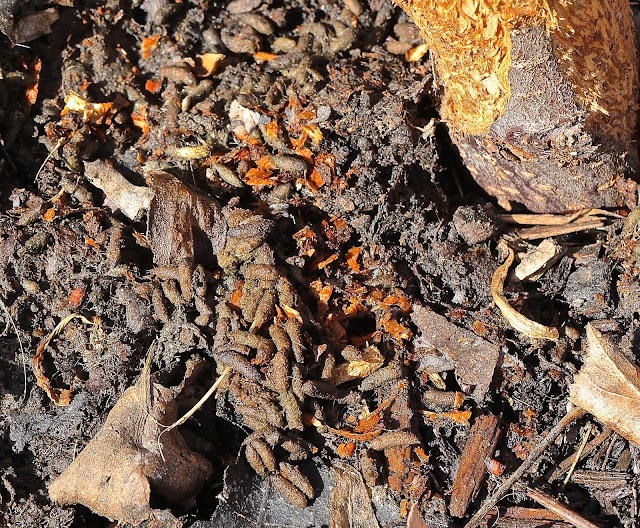House Finch - Carpodacus mexicanus
House Finches winter in Calgary and are less common during the spring and summer. Purple Finches are usually not present during the winter and return in the spring.
The two species can be difficult to differentiate. The finch below was near the top of a tall spruce tree and without my binoculars I was not able to identify the bird. Fortunately I had my camera and the identification was straightforward once I viewed the image on my computer.

The finch on the spruce branch above is a House Finch,
The red colouration in a House Finch is brightest on the forehead and over the cheeks (malar area). In a Purple Finch the entire head is red.
The upper beak in a House Finch is curved. In a Purple Finch the beak is straighter.
The tail in a House Finch is longer than the tail in a Purple Finch. In flight, the tail notch in a Purple Finch is more distinct.
References
Sibley DA. The Sibley Guide to Birds. Alfred Knopf, New York. 2000.
House Finches winter in Calgary and are less common during the spring and summer. Purple Finches are usually not present during the winter and return in the spring.
The two species can be difficult to differentiate. The finch below was near the top of a tall spruce tree and without my binoculars I was not able to identify the bird. Fortunately I had my camera and the identification was straightforward once I viewed the image on my computer.
The finch on the spruce branch above is a House Finch,
The red colouration in a House Finch is brightest on the forehead and over the cheeks (malar area). In a Purple Finch the entire head is red.
The upper beak in a House Finch is curved. In a Purple Finch the beak is straighter.
The tail in a House Finch is longer than the tail in a Purple Finch. In flight, the tail notch in a Purple Finch is more distinct.
References
Sibley DA. The Sibley Guide to Birds. Alfred Knopf, New York. 2000.






